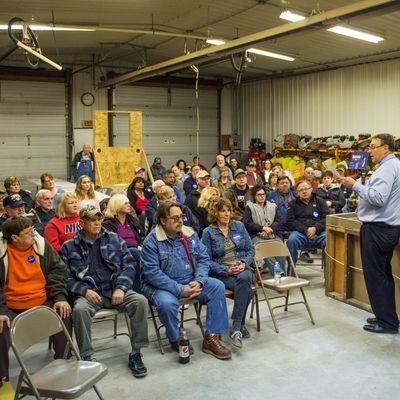
One of the by-products of the intensely competitive 2016 Democratic presidential nominating process was a batch of new national party rules governing future contests. Some, like the elimination of superdelegates as autonomous convention voters, were demanded by former Bernie Sanders supporters. Others, like making caucuses more open and transparent, came from elements in both the Sanders and Hillary Clinton camps.
This latter category of “reforms” was of particular concern to Democrats in Iowa, where any tampering with the sacred traditions of the first-in-the-nation caucus are frowned upon like restrictions on ethanol. But the Iowa Democratic Party sucked it up and developed some new procedures (they are still in draft form, and would have to be approved by the national party) that will most definitely make for a different event, with probable if hard-to-predict implications for the large 2020 presidential field assembling in the near distance.
One big change made in response to national demands that caucuses allow for less restrictive participation is the establishment of “virtual caucuses,” allowing registered Democrats to hold their own caucuses via mobile devices on six specific dates immediately prior to the main event on February 3. Here’s how Iowa activist Laura Belin explains the procedures:
Virtual caucus-goers will be able to indicate up to five choices for president.
Results from the call-in caucuses will be aggregated by congressional district, using a ranked choice process. The 15 percent viability threshold — an important part of the Iowa Democratic caucuses since the early 1970s — will be applied to results at the congressional district level.
So instead of taking an initial vote, determining “nonviable” candidates, and redistributing their support to others via physical grouping in the room, as occurs in the traditional caucus, participants in “virtual caucuses” will rank their five presidential favorites and a mechanical process of ranked-choice voting will redistribute votes for nonviable candidates. More controversially, 10 percent of the “state delegate equivalents” — the official measurement of winners and losers in the caucus — will be reserved for “virtual caucus” participants. That arbitrary number bothers some, though there’s no way at this point to know what percentage of total caucus participants will choose the virtual option, and the tradition-minded state party would probably like to keep the number low.
Another “reform” that relates directly to a 2016 complaint by Sanders supporters requires tabulation and publication of the candidate preferences of caucus participation from the first round forward — the raw totals, not just the state delegate equivalents, as state party chairman Troy Price explained at a press conference:
The DNC rules require us to release more than just the state delegate equivalents on caucus night. Rather, we will now release the raw counts on the first alignment, the raw counts on the second alignment, and the state delegate equivalents earned by each campaign. But just to be clear: the apportionment of national convention delegates will be based only on the state delegate equivalents earned on caucus night. They will not be based off raw results.
The raw results will make recounts possible for the first time. And probably more importantly, candidates who didn’t win the official “state delegate equivalents” count but did better in the raw results will have a new bragging/spin argument. It makes the Democratic caucus a bit more similar to the Republican version, which is really just a straw poll of participants without the gymnastics of viability thresholds and affinity groups.
For the purposes of the national journalists who will swarm Iowa in December of this year and January of 2020, the new rules will simply make a uniquely complex process even more complicated. And among insiders, it will be a test to see which campaigns seem to be prepared to take advantage of it all.






























